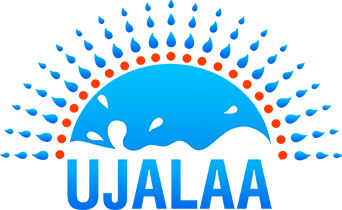Introduction
The livestock sector plays an important role in the rural economy of India. The importance of livestock in Indian agricultural economy has been well recognized and next to land and irrigation, livestock is the single largest asset in rural India. About 75 % of the Indian rural households are keeping the livestock out of which the resource poor farmers own nearly 80 % of the livestock. Therefore, livestock and livelihood have an intimate relationship particularly in arid and semi arid areas. Further, livestock production in India is largely an output of small holders and more than 70 million rural households depend either directly or indirectly on livestock for their livelihoods. Even more importantly, livestock provides a major source of supplementary income for a large majority of rural households and this sector is therefore, highly livelihood intensive and more importantly provides sustenance during drought and other natural calamities to rural families. Improvement in livestock production is, therefore, an important pathway for increasing the income of marginal and small farmers and landless labourers, given the uncertainties of crop production. The livestock extension education (DAIRY MANAGEMENT TRAINING) plays an important role in this context to empower the farmers with appropriate technological knowledge and skills through various extension education and training programmes.
Goal
To teach people living especially in rural areas how to raise their animals with better management practices by their own efforts using their own resources of manpower and materials with the minimum assistance from other sources
Objectives of Dairy Management Training Programme
- Bringing about desirable changes in the knowledge, attitude and skill.
- Assisting livestock farmers to realize their needs and problems.
- Developing rural leadership, mobilizing people and their resources.
- Providing knowledge about recent technologies and their application.
Purpose And Significance Of Dairy Management Training
Livestock extension involves systematic and organized communication with livestock owners with a view to helping them in such a way that the livestock owners
- Obtain a better insight into their present and future position as livestock owners;
- Acquire sufficient knowledge and skills necessary to increase production or reduce cost of production;
- Develop positive attitudes of livestock development
- Able to choose feasible and optimum objectives;
- Able to identify problems, look for solutions, solve the problems identified; and
- Evaluate the results within the farming system situation in which they are operating.
Livestock Situation
- Resource poor livestock farmers contribute a lot to production of milk, etc.
- Common property lands are shrinking leading to increased dependency on purchased inputs
- Majority of livestock keepers are poor and women
- Per capita consumption of milk among the resource poor milk producers is very low
- Majority of the poor own few less productive animals
- The livestock owners have no control on quantity and quality of production.
Situation in KOTA, BARAN, JHALRAPATAN, BUNDI District
Communities residing in these district are dominated by tribal & other communities. Most of them are small marginal farmers, rearing dairy animals for secondary source of income
- Unawareness of scientific/better management practices
- Economic burden for rearing unproductive animals for longer duration
- Negligence towards feed supplement, periodic deworming and timely vaccination
- Unaware about metabolic disorders which are seen after calving if not treated timely affects the milk production
- Animals are frequently affected with mastitis and blood protozoan infestation
- Unavailability of timely treatment facility for sick animals
- Gynaecological disorders like Increased age at maturity and long intercalving period is mostly seen.
- Unawareness about high yielding fodder crop varieties.
- Negligence towards scientific animal housing
- Unable to meet out round the year fodder requirement
- During summer most of the animals are thrive on paddy and wheat straw where as in other season animals are thrive on grasses grown on farm bunds and road side having low nutritive value.
- Mortality in calves due to heavy endoparasitic infestation
- Unawareness towards value addition on dry and green fodder
During training programme emphasis will be given to women livestock farmers
Why women participants in dairy management training programme?
Priority was given to women as most of the work regarding feeding and watering of animals is the sole responsibility of women. Majority of women are participating in milking of animals, cleaning of milk utensils, cleaning of milking shed and animals, disposal of dung and preparation of dung cake. Women in their late middle old age are actively participating in health care as they had leant the things by seeing and out of experience. The role of dairy farm women is not recognized as economic contribution and they remain as unpaid labour.
Topics to be taken during dairy management training programme
- Identification of breeds of cows and buffaloes
- Scientific Animal Housing
- Importance of Heifer Rearing
- Care and management of pregnant animals
- Importance of feed supplements, periodic deworming and vaccination
- Formulation of balanced concentrate ration
- Identification of metabolic disorders (Problems occurred in animals after calving) and their prevention
- Precautions to be taken at the time of animal purchasing
- Various recipes of ethno-veterinary practices for common diseases frequently encounter in animals
- Value addition on green and dry fodder




